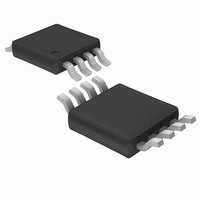LX1971IDU Microsemi Analog Mixed Signal Group, LX1971IDU Datasheet - Page 5

LX1971IDU
Manufacturer Part Number
LX1971IDU
Description
IC SENSOR LIGHT VISIBLE 8MSOP
Manufacturer
Microsemi Analog Mixed Signal Group
Datasheet
1.LX1971IDU.pdf
(9 pages)
Specifications of LX1971IDU
Wavelength
520nm
Output Type
Current
Package / Case
8-TSSOP, 8-MSOP (0.118", 3.00mm Width)
Lead Free Status / RoHS Status
Lead free / RoHS Compliant
Available stocks
Company
Part Number
Manufacturer
Quantity
Price
Company:
Part Number:
LX1971IDU TR
Manufacturer:
AD
Quantity:
311
Copyright © 2003
Rev. 1.1b,2005-08-10
user input) and semi-automatic, to fully manual override
implementations. These general guidelines are applicable
to a wide variety of potential light control applications.
The LX1971 can be used for the control of artificial
lighting, operation of shades, LED signage and display,
street lighting, automotive light sensors and control of
backlight dimming
the need to correlate the sink and source current of the
LX1971 for the target environment and its ambient light
conditions. The mechanical mounting of the sensor, light
aperture hole size, use of a light pipe or bezel are critical in
determining the response of the LX1971 for a given
exposure of light.
lighting control solution with no user interaction. Choose
R1 and R2 values for any desired minimum brightness and
slope. Choose C1 to adjust response time. As an example,
let’s say you wish to generate an output voltage from
0.25V to 1.25V to drive the input of an LED driver
controller.
brightness and 1.25V represent the maximum. The first
step would be to determine the ratio of R1 and R2.
maximum output source current coming from the LX1971
under the application’s maximum light exposure, lets say
this has been determined to be about 50uA . Thus R2 can
be calculated first order as follows:
source current from the LX1971 is only about 44uA since
about 6uA of current will be contributed from R1.
The following examples present both fully automatic (no
In each specific application it is important to recognize
The example in figure one shows a fully automatic
R1 = R2 [ 3.0V/0.25V –1] = 11 * R2
Next the value of R2 can be calculated based on the
R2 = [ 1.25V / 50uA ] = 25KΩ
The output node will actually reach 1.25V when the
3V
I N T E G R A T E D
The 0.25V represents the minimum LED
R1
.
VSS
3.3V or 5V
R2
VDD
SRC
11861 Western Avenue, Garden Grove, CA. 92841, 714-898-8121, Fax: 714-893-2570
SNK
Figure 1
∴
10µF
C1
N/C
R1 = 11 * R2 = 275KΩ
dimming controller
P R O D U C T S
controller or
LED driver
input
A P P L I C A T I O N E X A M P L E S
Integrated Products
Microsemi
In Figure 2 user adjustable bias control has been added to allow
control over the minimum and maximum output voltage. This
allows the user to adjust the output brightness to personal
preference over a limited range. The PWM input source could
of course be replaced with an equivalent DC voltage.
added to the example in figure 2. In addition to the gate to turn
on and off the LX1971, a diode has been inserted to isolate the
LX1971 when it is shut down.
ways the sensor can be used. For example since there is also a
complimentary sink output a resistor from VDD to SNK could
develop a
hysteresis) to a fixed (or adjustable) reference voltage and
develop a logic signal.
operation of shades such a signal would engage the function
when reaching the correct ambient light level.
We are assuming a high impedance input to the LED driver.
Figure 3 shows how a fully manual override can be quickly
The preceding examples represent just a few of the many
3.3V PWM
PWM
Wide Range Visible Light Sensor
control
Diable
3.3V
voltage that could be compared (with some
P
30K
RODUCTION
CMOS
40K
Gate
R1
60K
VSS
3.3V or 5V
25K
R2
VDD
SRC
10µF
In the case of street lighting or
VSS
Figure 2
Figure 3
D
SNK
VDD
SRC
ATA
SNK
30K
S
10µF
HEET
N/C
dimming controller
dimming controller
controller or
LED driver
controller or
N/C
LED driver
input
input
LX1971
Page 5





















